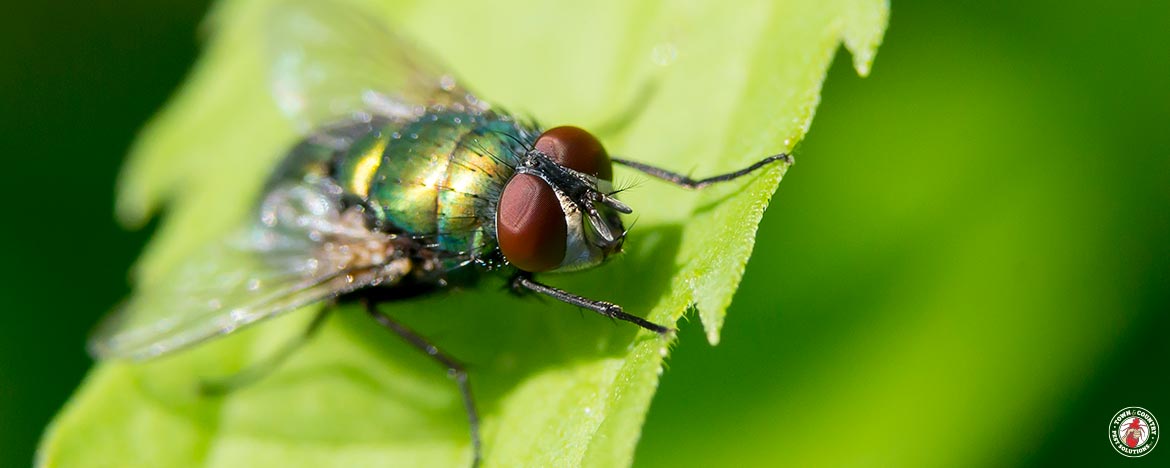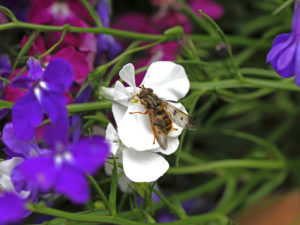
Due to their habit of congregating on rotten substances and materials, fly pests, like house flies, blow flies, black flies and stable flies, are constantly covered in dozens of disease-causing microorganisms, making their indoor presence a medical threat. Flies rely on decaying organic matter in the environment for their survival, as eggs and larvae (maggots) require the nourishment of rotting materials in order to develop properly. Fly infestations occur when indoor sources of decaying organic matter lure flies into homes. While most people would never tolerate living within a home where foul rotting materials are present, flies can become abundant pests within homes that are seemingly clean. For example, many homes see food scraps accumulate behind kitchen appliances and/or within furniture cushions, which can easily attract a large number of flies. Also, items that are commonly found in residential yards decay at an accelerated rate, and/or become moldy in response to rainwater, which will also attracts fly pests.
Compost piles, clothing, cushioned lawn furniture, rotting patio wood, fallen tree-fruit, full garbage and recycle bins, and bundles of leaves, grass clippings and other forms of plant debris develop mold in response to rainwater saturation. These moldy items become breeding grounds for fungus gnats and numerous other fly species. Compost piles, garbage, grass clippings and leaf bundles should always be kept in tightly sealed containers and removed from properties as frequently as possible, as these items become even more attractive to fly pests after becoming wet. Vinegar flies and fruit flies are particularly common in and around homes where improperly sealed, wet and/or exposed compost heaps are located nearby. Biting stable flies also gravitate around wet compost as well as excessively moist grass clippings, straw and hay. Excrement from horses, dogs, cats and wildlife, as well as damaged septic systems or sewer pipes will attract a variety of relatively small fly pests, including humpback flies, gnats, and drain flies. Preventing fly pest issues by keeping yards and homes free of common sources of decaying organic matter is the most reliable method of fly control. Sticky fly traps and professional grade insecticides can also be effective for reducing fly pest numbers.
Have you ever struggled to control an abundance of indoor flies that had been gravitating toward hidden sources decaying organic matter?










